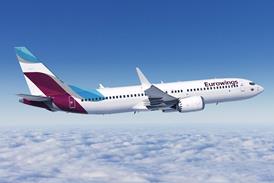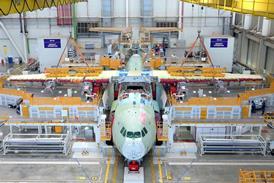Airborne collision warning systems may give simple guidance to pilots, but faced with other sensory inputs, they may still be ignored
Aviation accidents have a way of revealing problems that no-one knew existed. Since the 1 July mid-air collision over southern Germany, a problem has emerged that had not been foreseen, and others were already there but had not been noticed.
The principal unforeseen issue is that airborne collision avoidance system (ACAS) training for pilots had been assumed to be simple. It is now clear that it is not simple.
Pilots have to be able to carry out, in all circumstances, the standard operating procedure (SOP) for reacting to an ACAS order - the ACAS resolution advisory (RA) alert. It looks easy, but under certain combinations of circumstances it is not.
The Western SOP is simply that pilots obey an ACAS RA at all times, even if an air traffic control (ATC) clearance or instruction has told them to do the opposite. That sounds so simple it should hardly need spelling out - the ACAS RA says "climb, climb", so the pilot climbs; or the RA says "descend, descend" so the pilot descends. In fact the rule is a little more complex. In summary, the pilot has the choice - given other inputs such as being able to see the conflicting aircraft through the windscreen - of not actually climbing or descending, but he must never do the opposite of what the RA says. But, says the manual sagely, the pilot must be certain that the aircraft he can see is the same aircraft that triggered the RA. That sounds easy, but is actually impossible when milliseconds count.
Meanwhile, a crucial issue that has emerged and had not previously been noticed is that Russia differs from the West in its SOP. In Russia ATC instructions take precedence over an ACAS RA. In the case of the recent collision that looks like the simple reason why the Russian pilot descended when the RA had told him to climb.
As usual, there is more to this situation than meets the eye. Information gleaned from Swiss and German radar so far indicates that the Russian pilot had actually begun to climb at about the same time that he would have received an ACAS "climb" RA - it has been confirmed that he received the RA. One second after the RA, however, ATC told the Russian pilot to "expedite" a descent of 1,000ft (300m). The Russian did not reply - probably confused by the conflicting orders. But that was not all. Fourteen seconds later the controller repeated the order, again emphasising the need to "expedite descent". This time the Russian pilot obeyed ATC - a fatal decision, as it turned out.
Since the event, Flight International has talked to pilots from a number of European airlines and pilot organisations about what they think they would have done in the same situation. They were all adamant that ACAS takes precedence according to SOPs, but felt that faced with two urgent ATC demands after the RA had operated, they would have followed the ATC order. Only one of the pilots differed, and he said he was not sure what he would have done.
The difference between Russian SOPs and those of the West can be relatively easily resolved. The Russian authorities have already indicated that their ACAS SOPs will be reviewed.
It is the obvious pilot uncertainty, however, which highlights the fact that the airlines' ACAS training must be more precise than it is now. Any training system which demands that pilots place absolute trust in the advice of a machine in the face of opposing instinctive reactions have to drill the procedure into the pilot by repetition, in the way that the military forces drill their troops to act according to orders instead of their instincts when faced with a frightening situation.
In January last year two Japanese widebodied airliners came within a few metres of collision as the result of an ATC error. One of the pilots ignored his ACAS climb RA in favour of visual judgement and continued a descent. Meanwhile, the other pilot followed his ACAS RA, and collision was only prevented because he reversed his manoeuvre just in time because he could see the developing situation through his windscreen. This reversal saved the day - just. But the separation would have been safer if both pilots had followed their RAs in the beginning.
The industry should tailor its ACAS training for pilots so that pilots trust RAs above everything else and are not confused by other inputs. After all, ACAS only comes into operation when ATC has failed or when pilots have made a mistake in following an ATC clearance. So ACAS must be the final arbiter.
Source: Flight International










































